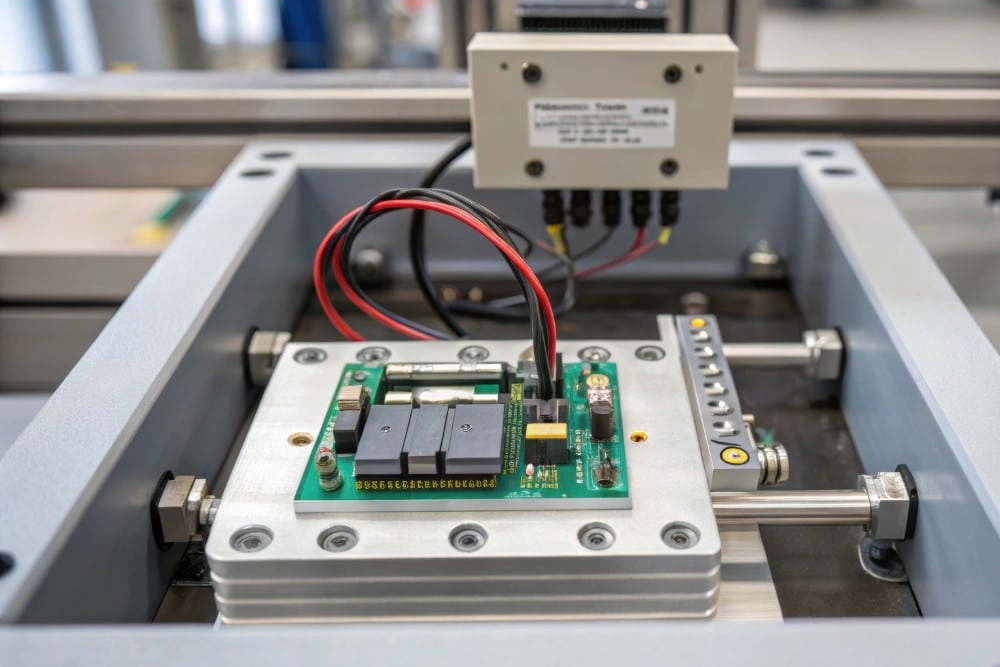
When we use tools and machines to measure weight, like a load cell, we want to make sure they don’t get damaged.
Imagine if you stacked too many books on a table—at some point, the table might break. Load cells, which are used in industries to weigh things accurately, have a similar problem if we put too much weight on them. This is called load cell overload.
Let’s break it down step by step so you can understand what happens, how we protect load cells, and why it’s important.
What Is Load Cell Overload?
A load cell is built to measure specific weights within a range. Overloading happens when the weight put on the load cell goes beyond its safe limit.
Load cells have a limit called the maximum rated capacity. If you go over that limit, the load cell can stop working correctly or even break.
What Happens If a Load Cell Is Overloaded?
If a load cell is overloaded, a few things can happen:
- Permanent Damage: Just like bending a spoon too much, overloading can permanently deform the internal parts of the load cell.
- Inaccurate Readings: Even if it doesn’t break, the load cell might give wrong weight measurements after being overloaded.
- System Shutdown: In some machines, the load cell is connected to a system that might stop working altogether if the load cell fails.
Overloading is like pushing a machine beyond its limits—it’s not something you want to do if you rely on the load cell for accurate measurements.
How Does Load Cell Overload Detection Work?
To protect load cells, manufacturers add smart overload detection mechanisms. Think of these as shields or barriers that prevent damage. Here are a few ways they work:
- Mechanical Stops: These are physical barriers inside the load cell that stop the weight from pressing too far.
- Limit Switches: These are like warning bells. If the load gets close to the maximum limit, the system sends an alert to warn you.
- Software Alarms: Some systems use software to monitor the load cell’s activity. If the weight goes beyond a certain point, the software stops the process automatically.
These mechanisms work together to make sure the load cell stays safe, even if someone accidentally puts too much weight on it.
What Is the Safe Load Limit for a Load Cell?
Each load cell is designed with a specific safe load limit. This is the maximum amount of weight it can handle without being damaged. For example, a load cell used in weighing trucks will have a much higher limit than one used for weighing food.
Manufacturers also include a safety margin—a little extra room above the normal limit—to protect against accidental overloads. However, regularly exceeding the safe limit isn’t a good idea.
Load Cell Overload Protection Mechanisms
Load cells are precise instruments that measure weight accurately. But like any delicate tool they need protection against misuse or accidental damage.
Overloading a load cell can cost you repairs, downtime or inaccurate results. That’s where overload protection mechanisms come in.
These mechanisms are like safety nets that ensure the load cell will still work even if it encounters weights beyond its designed limit.
Let’s get into it.
1. Mechanical Stops
A mechanical stop is a physical barrier inside the load cell. Its purpose is to limit how far the internal components can move when weight is applied.
How it works:
Imagine pressing on a sponge. If you press too hard it will flatten completely and lose its shape. A mechanical stop is like a plate under the sponge that prevents you from pressing too far.
Benefits of mechanical stops:
- They are the first line of defense against overload.
- They protect the load cell’s sensitive components like strain gauges from being compressed or stretched too far.
Common uses:
Mechanical stops are used in industrial applications where heavy loads are common, like truck weighing scales or heavy machinery monitoring.
2. Overload Limit Stops (End Stops)
Like mechanical stops, overload limit stops provide physical protection but are designed to absorb excess force. These stops often use materials that can deform slightly under pressure to reduce the impact on the load cell itself.
How it works:
When the weight exceeds the load cell’s safe capacity the overload limit stop absorbs the extra force. This minimizes the risk of permanent damage to the load cell’s internal parts.
Key features:
- Can be adjusted for different load capacities.
- Used in dynamic weighing systems where loads may shift unexpectedly.
3. Limit Switches and Overload Alarms
Sometimes, physical protection isn’t enough. That’s where limit switches and overload alarms come in. These systems alert the operator or automatically shut down the process when the load exceeds the safe limit.
How they work:
- Limit switches are mechanical or electronic devices that trigger when a certain weight is reached. For example, if the weight on a load cell gets too high the switch activates to stop the process.
- Overload alarms are often part of software systems. These alarms monitor the load cell’s output in real-time and send alerts if the weight goes beyond the safe range.
Why they’re important:
These mechanisms don’t just protect the load cell, they also protect the larger system or equipment connected to it, for operator and machine safety.
4. Shock Absorbers and Load Buffers
For environments with sudden heavy impacts like construction sites or manufacturing plants, shock absorbers and load buffers are used to protect load cells.
How they work:
These components are installed around or near the load cell to absorb sudden forces like a heavy object being dropped onto a scale.
Advantages:
- Reduce the risk of instant overload.
- Prolong the life of the load cell by minimizing wear and tear from repeated impacts.
5. Overload Protection Circuitry
For more advanced system,s overload protection circuitry is used to detect and mitigate electrical overloads that could damage the load cell.
How it works:
Load cells work on electrical signals to measure weight. If an electrical spike occurs (e.g. due to a power surge) the circuitry diverts or shuts off the excess current to prevent damage.
Applications:
This is especially important in high-precision environments like medical equipment or laboratory scales where even a small electrical issue could cause big problems.
6. Software Monitoring Systems
In modern industrial applications, software-based solutions are used to protect load cells. These systems use data analytics and machine learning to predict overload scenarios.
How they work:
- The software monitors the load cell’s output.
- If the weight gets close to the maximum limit the system sends an alert or stops the process.
- Advanced systems can even predict wear and tear on the load cell so you can do preventative maintenance.
Why it matters:
Software monitoring adds another layer of intelligence to overload protection so issues are caught early and processes run smoothly.
The Whole Picture: How They Work Together
In many applications multiple overload protection mechanisms are used together for maximum safety and efficiency. For example:
- A truck scale might use mechanical stops and software alarms to handle excess force.
- A laboratory scale might have overload protection circuitry and shock absorbers to protect against sudden impacts and electrical surges.
- These layers of protection ensure load cells are reliable, accurate and durable in harsh environments.
Why Load Cell Overload Protection Matters
Protecting load cells from overload isn’t just about the equipment. It’s about accuracy, safety and uptime. By understanding how these work industries can optimize their processes and prevent costly downtime.
For more insights on load cells and weighing solutions, check out our other blog articles.


